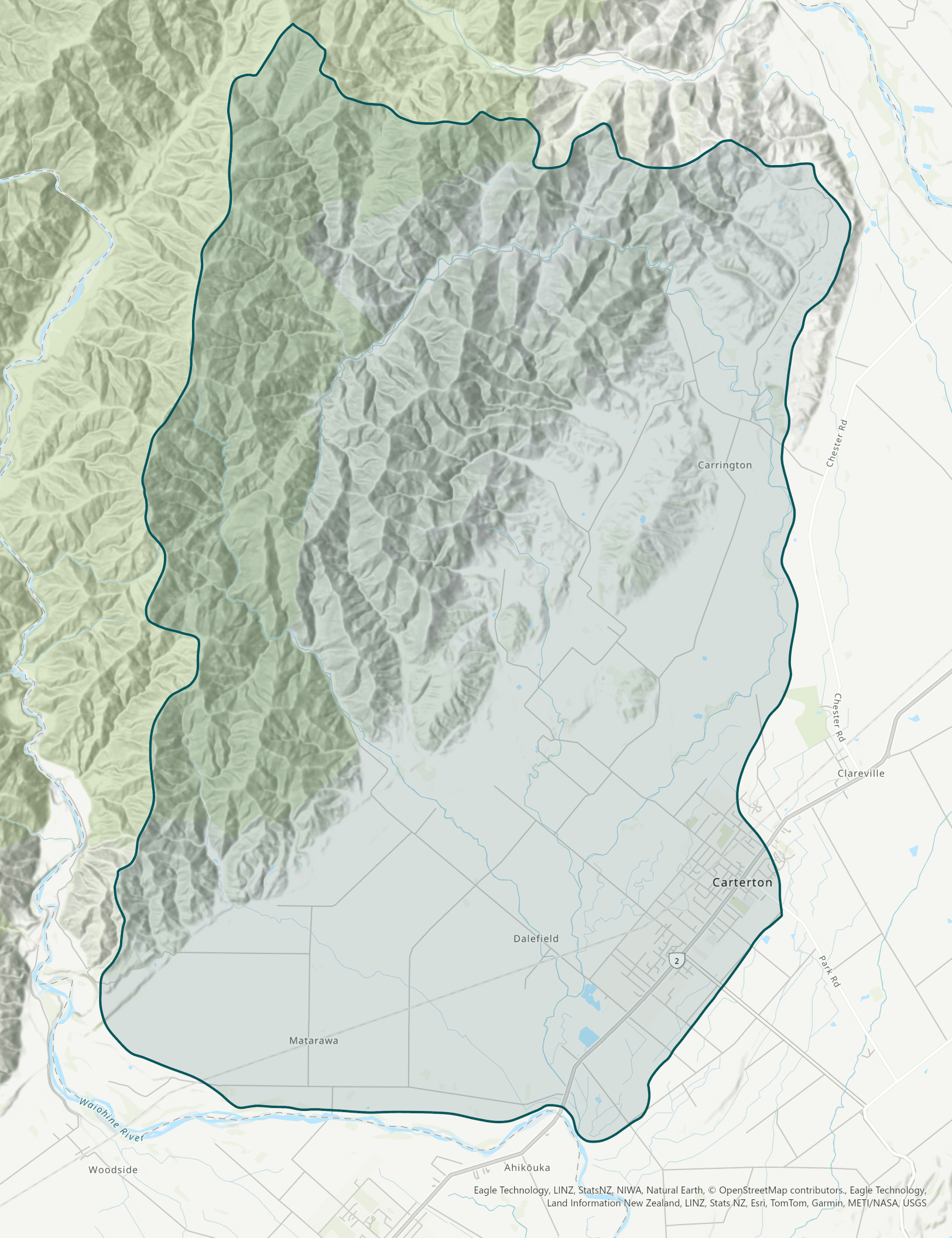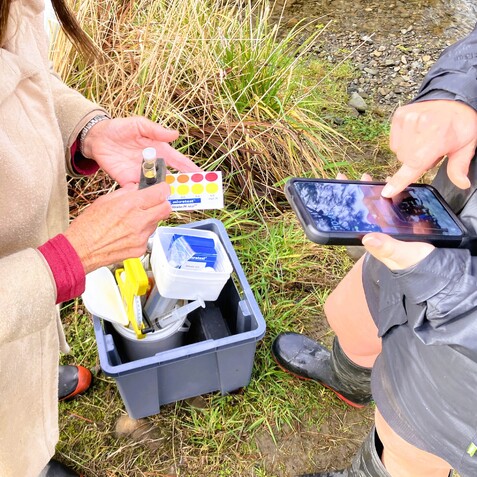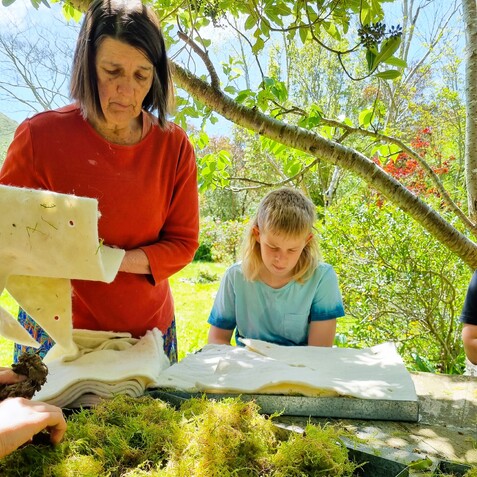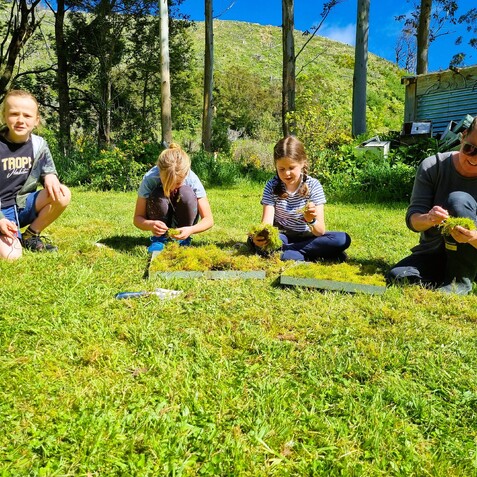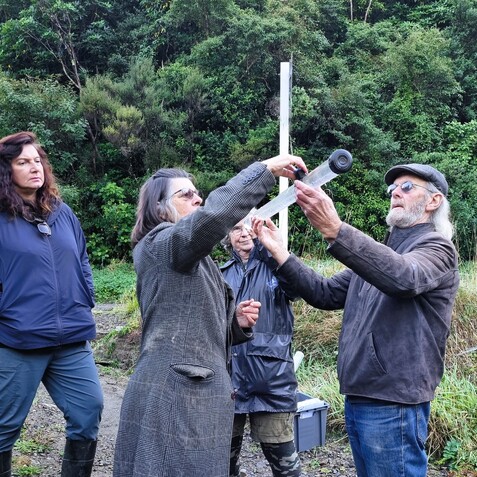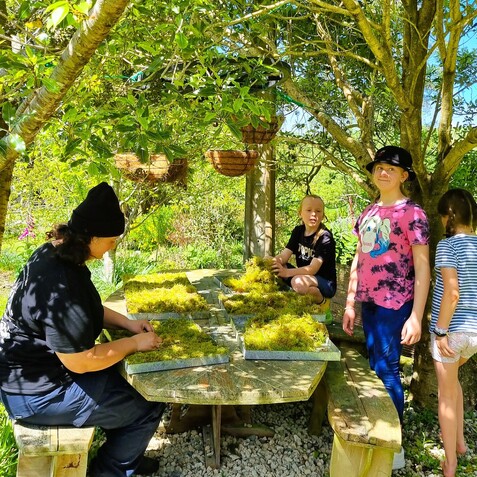Upper Mangatarere Community Catchment Group
We are the Upper Mangatarere Community Catchment Group (UMCCG). Our vision is to enhance native biodiversity in the Upper Mangatarere Catchment. We are a group of passionate landowners in the catchment dedicated to enhancing the environmental health of the Mangatarere awa and the surrounding whenua.
We are a community group formed out of a local landowner passion for te taiao. UMCCG community came together in 2012 around the proposal to dam the Mangatarere River. UMCCG officially formed in 2020 under the Wairarapa Pūkaha to Kawakawa Catchment Group project
Location
The catchment group covers 15,716 ha. The Mangatarere Stream is a small gravel-bed stream in the central Wairarapa near the town of Carterton. Kiddie Creek, The Enaki Stream, Kaipaitangata Stream and Beef Creek are some of the tributaries of the Mangatarere.
The Mangatarere Stream originates in the Tararua Range which makes up nearly half of the catchment. Dry stock and dairy farming are undertaken on the rolling hill country and plains. Carterton township is also located in this catchment.
The regenerating and established native bush remnants in the Upper Mangatarere harbour a range of these native species or habitat important to them. Lizards have also been detected and the area is habitat for long-tail bats which are at risk from possums, mustelids and feral cats. Long-tail bats have the highest threat ranking of Nationally Critical.
The Upper Mangatarere Stream is also the last known long-term site for whio in the region. While whio have not been detected for some time, a young male duck was reported in the nearby Waingawa catchment in 2020.
Vision
To look after the waterways in the catchment area and restore native biodiversity in and around the stream.
Outcomes
Thriving native biodiversity both in the river and surrounding
A connected community that understands the history of the whenua and has plans that reflect the aspirations of everyone
Multigenerational kaupapa
A community that is prepared for emergency management and response
Projects
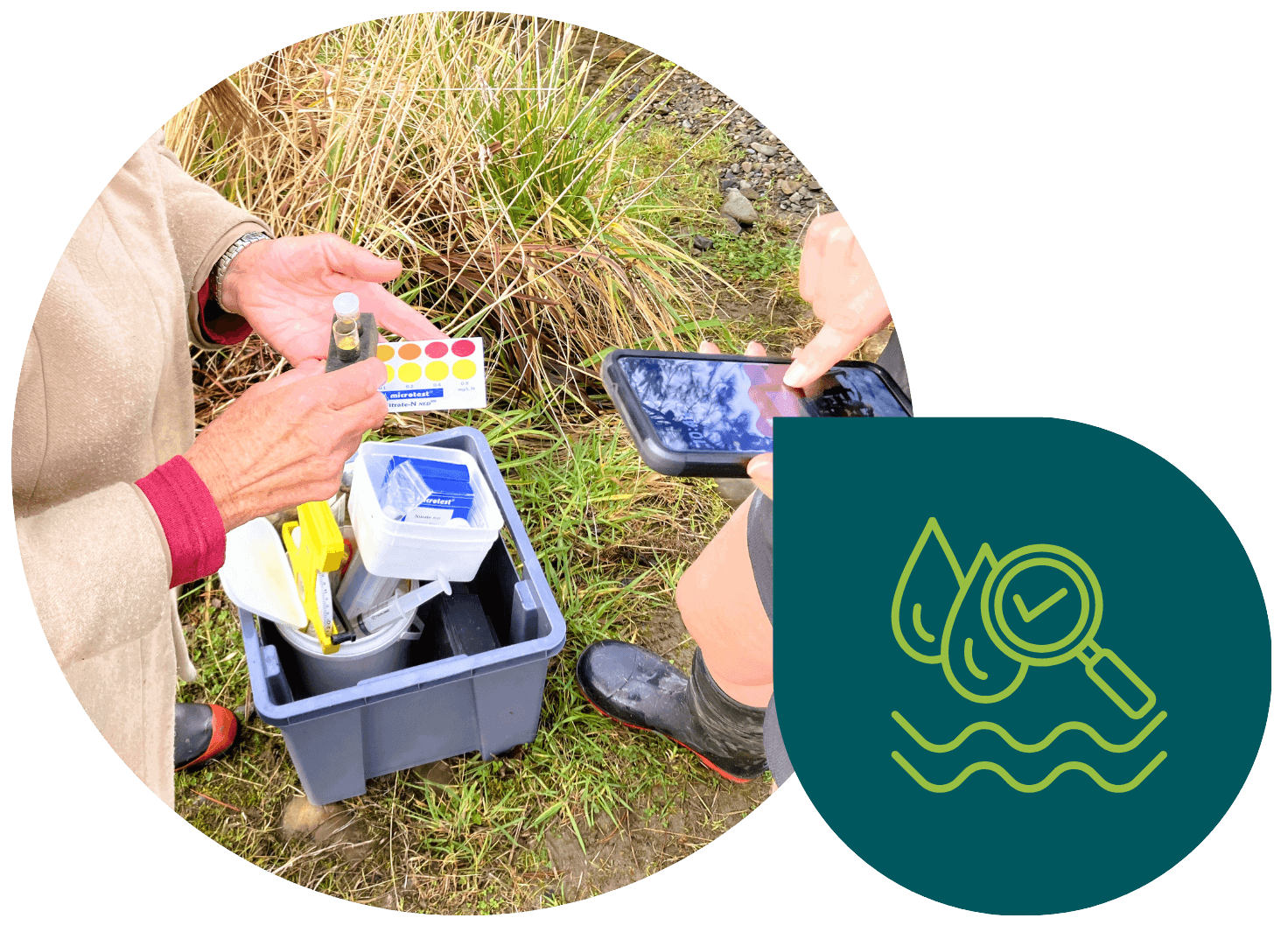
Water quality monitoring
UMCCG has completed seasonal water quality monitoring at five locations along the Mangatarere River, from the forest park boundary down to Carterton’s outskirts.
They’re also tapping into data from Greater Wellington, which monitors the Mangatarere’s confluence with the Waiohine River.
The aim is to understand how diverse land uses along the river might be impacting water quality.
Among the next steps, the group plans to focus on riparian planting to increase shading over the stream, especially during the summer.
This past summer, they carried out macroinvertebrate sampling across all five sites, revealing excellent water quality in the river’s upper reaches, where they found large stoneflies and mayflies – key indicators of a healthy stream ecosystem.
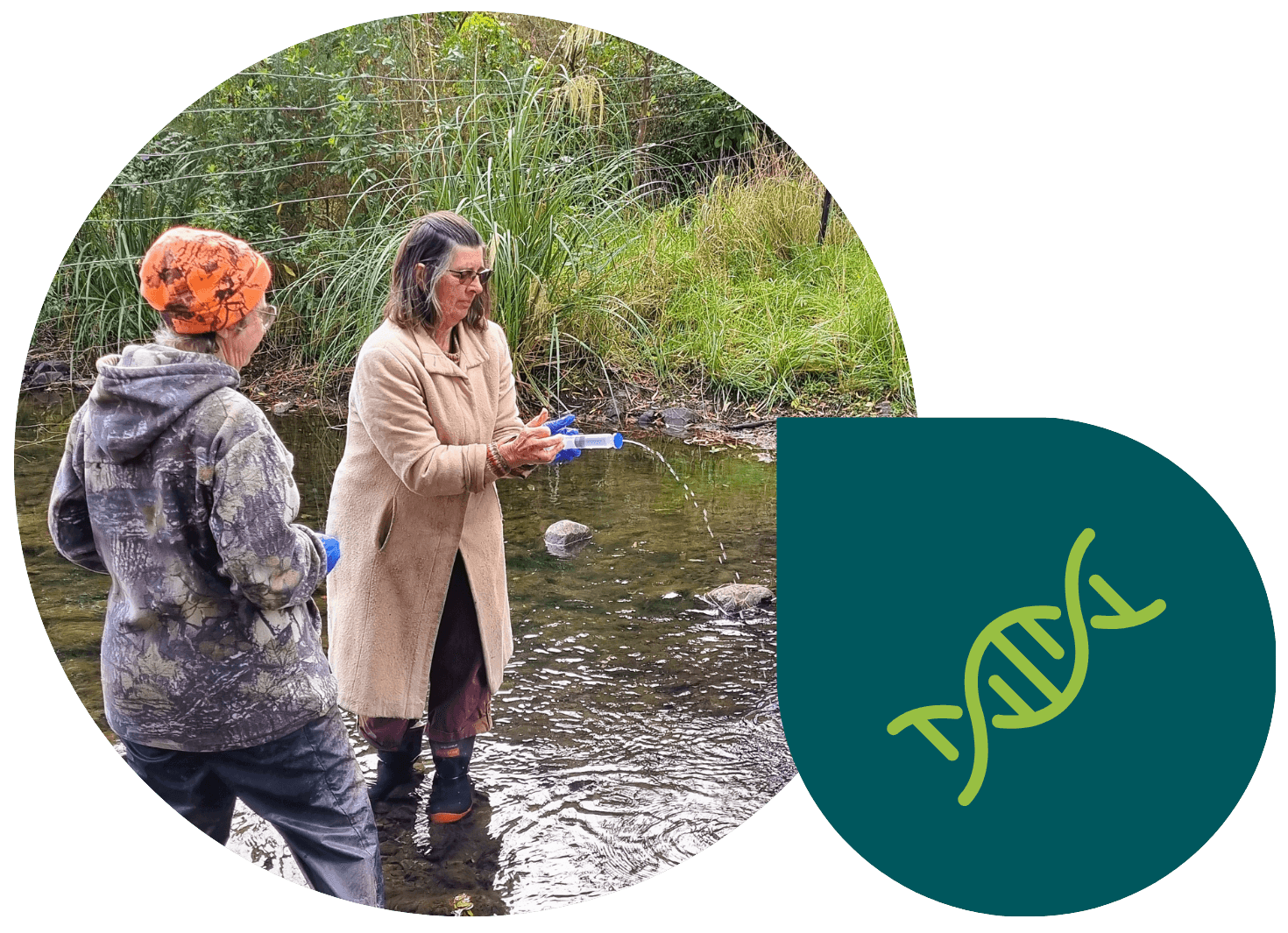
Species monitoring using eDNA
The group is also using eDNA technology to monitor species at two sites on the Mangatarere River and one on the Kaipaitangata Stream, a key tributary and the source of Carterton’s drinking water supply.
The Kaipaitangata area is of particular interest due to previous sightings of long‑tailed bats, with short‑tailed bats also having been known to roost nearby.
The group plans to revisit these sites in summer, aiming to detect pest species as part of their predator control programme and to support ongoing bat monitoring efforts.
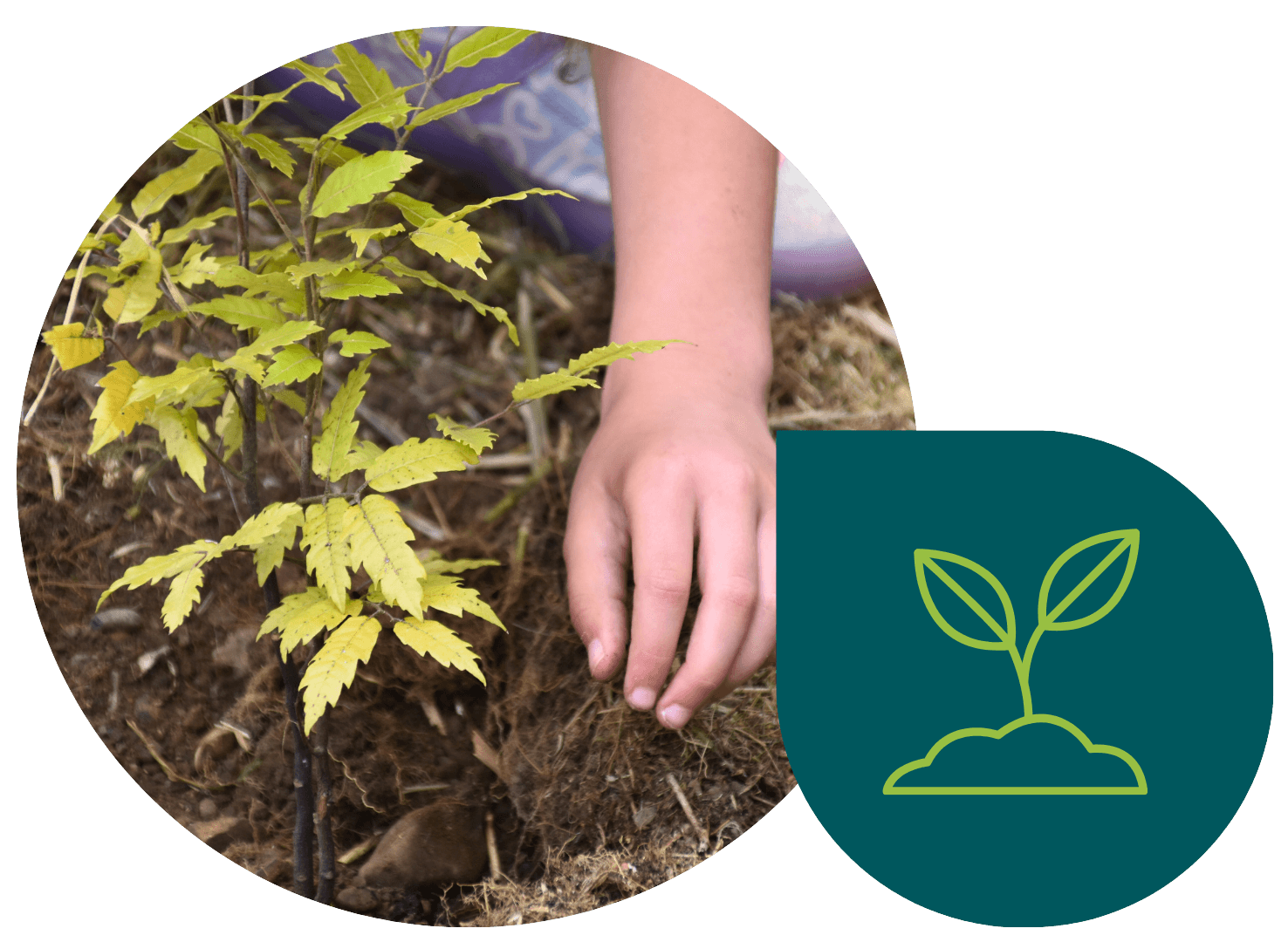
Restoration planting
Enhancing native biodiversity is central to the group’s restoration vision for the catchment.
They plan to collect local seedlings within the Mangatarere Valley to support restoration projects across the catchment area.
Already, a roadside reserve has been planted with native species, and the long‑term goal is to restore roadside corridors, riparian zones, and wetland ecosystems throughout the area.
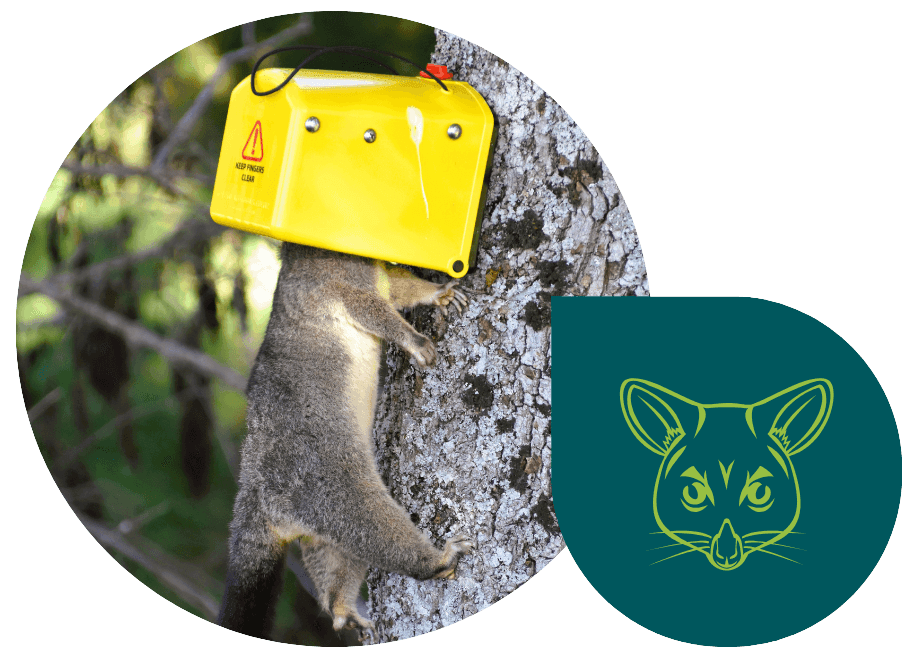
Pest control
To boost native biodiversity, the group is developing a pest management strategy for the catchment.
Their initial two year plan involves monitoring pest populations in the first year, followed by targeted control measures in the second.
Focus species include possums, feral cats, rats, mustelids, and goats, whose management is expected to create a more hospitable environment for native species.
Action plan - next steps
Next steps will include the following:
Collaborating with Mangatarere Restoration Society – this group works in the flats before the Mangatarere reaches Carterton, focusing on awa restoration, enhancing the area around the wastewater plant, and being part of flood management decisions.
Summer community event – with multiple groups interested in the Mangatarere and nearby whenua, UMCCG seeks to connect these groups around a shared vision for the river’s health. They’ll host a whānau picnic day at a local wetland to start sharing ideas.
Predator control programme – supported by Greater Wellington and Wairarapa Catchment Collective, the aim is to reduce predator numbers to boost native biodiversity.
Interpreting results and continuing monitoring.
Connecting with schools – an intergenerational kaupapa, the group values involving tamariki. Southend School will join in water quality monitoring, seedling collection, restoration planting, signage, and pest tracking. Potentionally connecting with other schools in the catchment.
Participating in long-tailed bat surveys – in the foothills of the Mangatarere catchment area on private land under guidance of a qualified bat ecologist.
Catchment Group Coordinator
ALISON DYE
mangatarereccg@gmail.com
